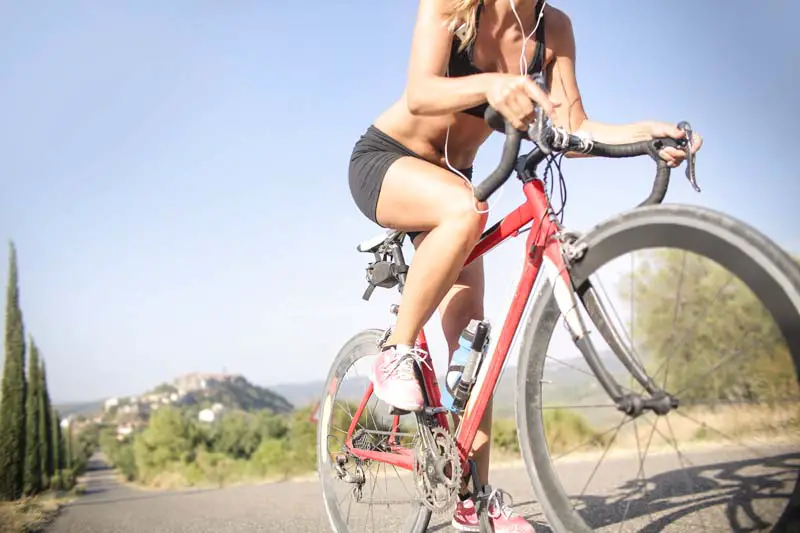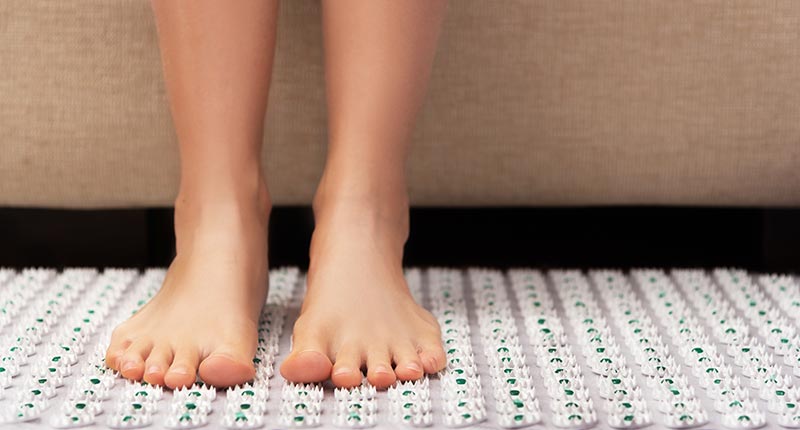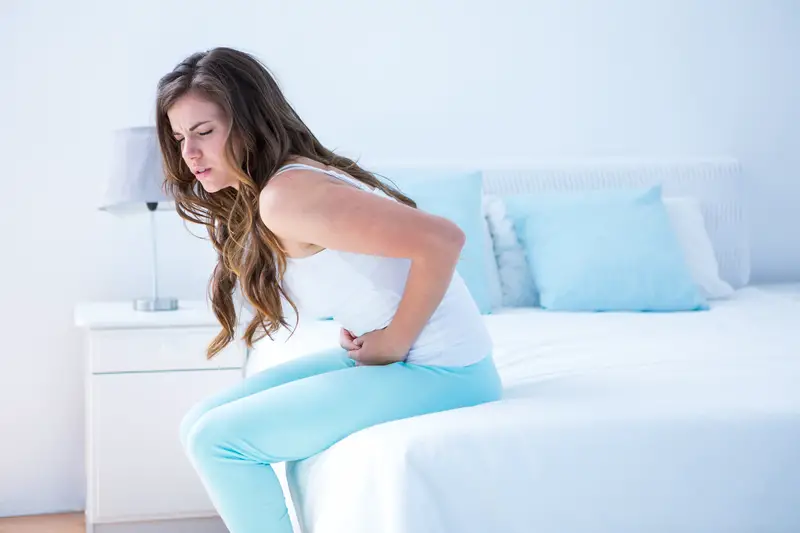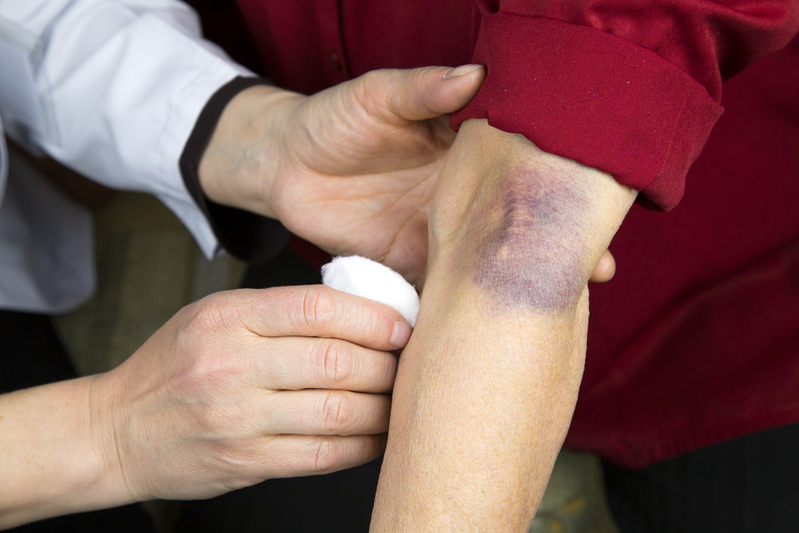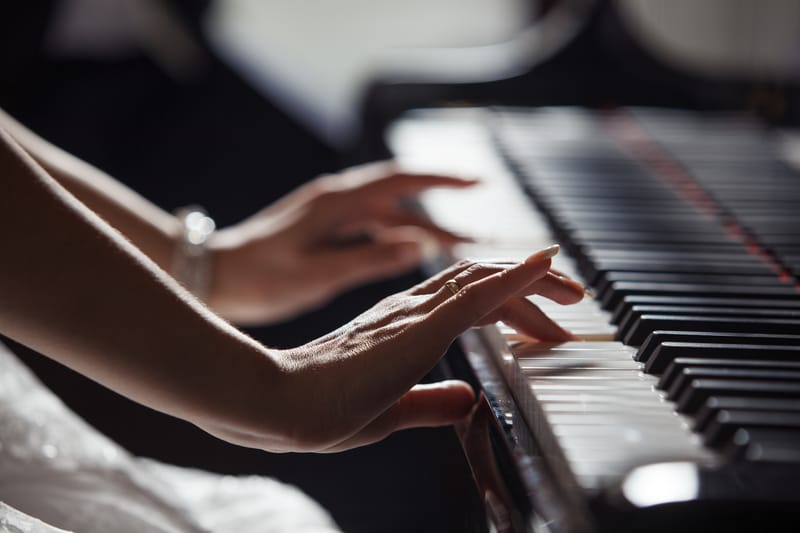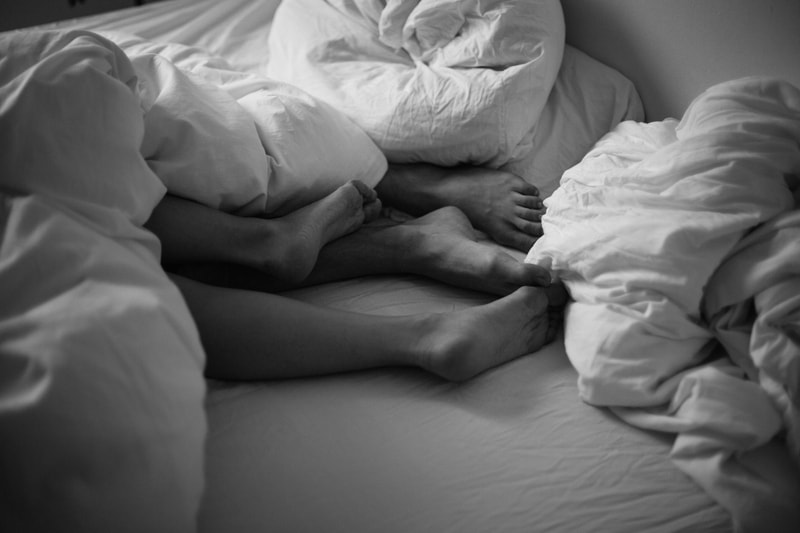Waking up to hip pain is not pretty, especially if it is a reoccurring experience. Chronic hip pain troubles many of us, so it is good to know that you are not alone. This means that someone out there may have the answer that you are looking for. Honestly, I am hoping that, for you, I will be that person.
Today I am here to talk to you about the use of acupuncture and acupuncture points for hip pain’ treatment. I will explain to you how these alternative medicine techniques are supposed to soothe your hip pain only to continue revealing the best part of them all. Let’s start, shall we?
Can Acupuncture And Acupressure Soothe Hip Pain?

Our hips, knees, and feet each day support and carry our body’s weight. Thanks to them, we are flexible, strong, and stable enough to move our bodies freely. But this also means that these body parts are frequently under considerable pressure, especially our hips. The hip joint is a joint that consists of large bones to which even larger muscles attach. It is incredibly easy to stretch out and hurt these muscles. Damage in this area often results in pain, soreness, tightness, and reduced mobility. It is difficult to wake up to pain, day after day.
Luckily, there is something that can take some of that pain away. While doctors are doing a great job at soothing hip joint pain, alternative medicine is worth exploring as well. The usual Western medicine treatment course includes physical therapy, oral medications, injections, rest, etc. Alternative medicine, on the other hand, often includes pain-relief techniques such as acupuncture and acupressure.
For many people, acupuncture has provided a more significant pain relief compared to the standard Western medicine. Acupuncture focuses on boosting the blood flow, which will essentially release muscular tightness, thus relieving pain. So far, acupuncture has been proven effective against pain in the shoulders, neck, hip, knee, etc. To do that, during the acupuncture session, special needles are inserted in your skin. But inserting these needles wherever you want will not do the trick. Instead, you need to insert them in special acupoints as they are called. There are a total of 361 acupoints on the human body. Many practitioners also like to use moxibustion for even better pain-relief effects.
Unfortunately, not everyone, including me, can afford an acupuncture session every week. In this case, knowing how to perform acupressure may come in handy. For anyone unfamiliar with the concept of acupressure, here is a quick review. Acupressure stimulates the same acupoints as acupuncture does with one significant difference. While acupuncture uses needles, acupressure uses pressure.
Knowing this, you do not necessarily need a professional practitioner to enjoy the benefits of acupressure. Instead, you can always do it at home. How? All that you need are the acupoints that are designed to help relieve your hip pain. To do that, you can do your research online or visit a practitioner for a couple of sessions until you get the hang of it. And for those of you who would like to enjoy acupressure right away, I will be sharing my nine favorite acupuncture points for hip pain.
The Eleven Best Acupuncture Points For Hip Pain
Acupoint: GB-29 (Other Names: Gallbladder-29/Ju Liao/Stationary Crevice)

Gallbladder-29 is a commonly used acupoint in the treatment of hip pain. You can locate this particular acupoint in the depression half way between the greater trochanter and the anterosuperior iliac spine. Daily stimulation of the GB-29 does a great job of activating this meridian and removing any present obstructions in this area.
Its stimulation greatly benefits our hips and the lower extremities. It is recommended that you stimulate the Gb-29 on each side if you struggle with pain, tightness, and numbness in the thigh and the lower back. Gb-29 can also help in the case of muscular atrophy and paralysis of the legs.
Acupoint: GB-30 (Other Names: Gallbladder-30/Huan Tiao/Jumping Circle)
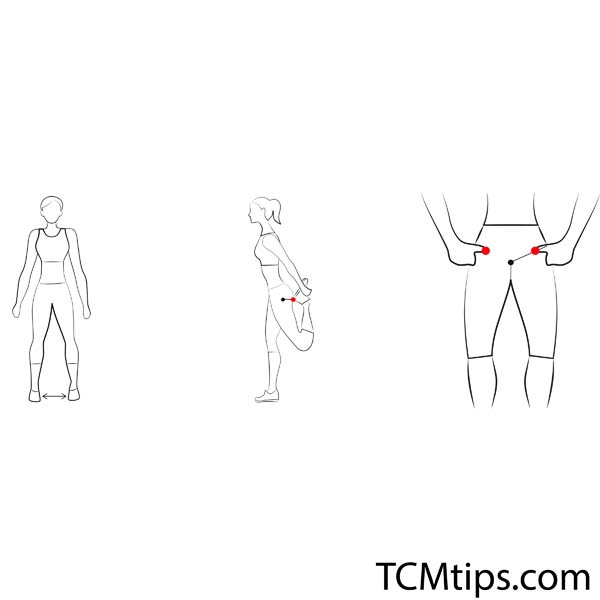
This next acupoint is located on the midline between the greater trochanter and the sacrococcygeal hiatus. The Gb-30 is primarily used to soothe hip and lower back pain. However, it has been proven as useful in the treatment of hemiplegia as well. Its stimulation helps the piriformis muscle relax, thus reducing the sciatic nerve’s impingement in this region. This helps soothe any pain, inflammation, and irritation in this area. It is also one of the acupressure points for sciatica pain relief.
Acupoint: GB-31 (Other Names: Gallbladder-31/Feng Shi/Wind Market)

To locate the Gb-31 acupoint, you first need to find the popliteal fossa. The popliteal fossa is the shallow depression located at the back of our knee joint. You will find the Gb-31 located below the greater trochanter, about 9 inches above the transverse popliteal crease. A more straightforward method that I like to use is to stand up with my hands at my side. The Gb-31 is approximately where you’re the tip of the middle finger touches the leg.
This acupoint is quite an important one. Anyone who deals with hip pain should give acupuncture points for hip pain a try. It is also the perfect acupoint to treat soreness and tightness in this area and paralysis of the legs.
Bonus: GB-31 is also the home remedy for premature grey hair
Acupoint: GB-34 (Other Names: Gallbladder-34/Yang Ling Quan/Yang Mound Spring)

Moving below, the next acupoint on today’s list is the Gb-34. The Gb-34 acupoint is located in the depression found anterior and inferior to the head of the fibula. Although most of its beneficial effects refer to the knee, its stimulation can benefit the hip. Upper back pain or hemiplegia, weakness, and numbness in the hip area can be efficiently relieved. As for the knee joint, this acupoint helps soothe pain and swelling.
Acupoint: GB-37 (Other Names: Gallbladder-37/Guang Ming/Bright Light)
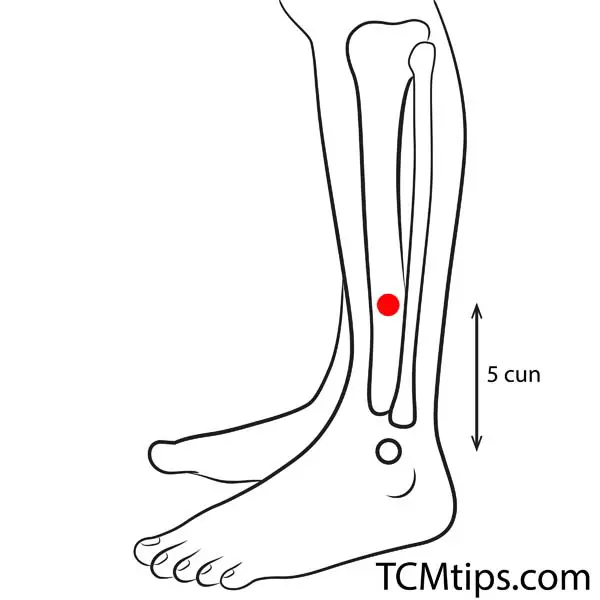 Pain, numbness, and motor impairment of the entire lower extremity can be significantly relieved with the daily stimulation of Gb-37. This is one of my favorite acupoints that I like to revisit whenever I encounter hip or knee pain. It is even said to benefit the eyes, treating night blindness and blurred vision.
Pain, numbness, and motor impairment of the entire lower extremity can be significantly relieved with the daily stimulation of Gb-37. This is one of my favorite acupoints that I like to revisit whenever I encounter hip or knee pain. It is even said to benefit the eyes, treating night blindness and blurred vision.
Start by locating your external malleolus. Now, measure about 5 cun above its tip. At the anterior border of the fibula, you will find the Gb-37. Remember to stimulate the Gb-37 on each side for maximum results.

Acupoint: GB-40 (Other Names: Gallbladder-40/Qiu Xu/Mound of Ruins)

There are only two acupoints from the gallbladder meridian left to mention. Both of these acupoints are located on your foot. The first is Gb-40 acupoint. This acupoint is located anterior and inferior to the external malleolus. It is found in the depression on the lateral side of the tendon of the toes’ long extensor muscle.
A significant part of its benefits refers to the foot. If you happen to experience any swelling in the external malleolus area frequently, this acupoint is one that you have to remember. Other than that, it can also relieve any tension in the neck, shoulders, and hips while also fighting signs of muscular atrophy in the lower extremities.
Acupoint: GB-44 (Other Names: Gallbladder-44/Zu Qiao Qin/Yin Portals of the Foot)
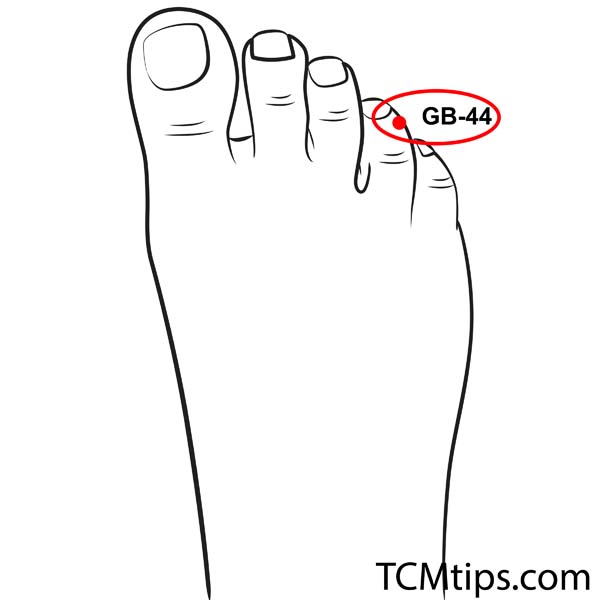
As we mentioned earlier, this acupoint, too, is located on foot. Its more precise location is on the lateral side of the fourth toe. Measure approximately 0.1 inches posterior to the corner of the toenail to locate the Gb-44 better.
Acupoint: Bl-40 (Other Names: Urinary Bladder-40/Wei Zhong/Middle of the Crook)
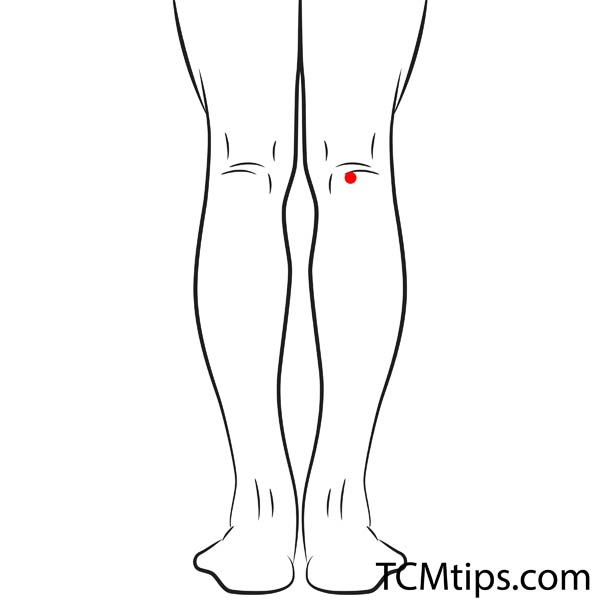
When you are done stimulating the Gb-31 acupoint, stay in this area for this new acupoint. We are talking about the Bl-40 acupoint. The Bl 40 acupuncture point is located in the midpoint of the transverse crease of the popliteal fossa.
This acupoint is a part of the urinary bladder meridian, but its benefits extend far beyond the urinary system. By stimulating the Bl-40 on a day-to-day basis, you would be activating this meridian. That will help relieve any pain in the lower back, hip, and knee areas. It can also help soothe any spasm and weakness in the lower extremities as well.
Acupoint: Bl-57 (Other Names: Urinary Bladder-57/Cheng Shan/Support the Mountain)

And the last acupoint of this list is the Bl-57. The bladder-57 acupoint is located below the gastrocnemius muscle, in the apex of its depression. For the most part, its effects refer to activating and benefiting the heel and the whole foot. However, it is also possible to soothe any spasm and pain in the lower back and entire leg.
Acupoint: ST-31 (Other Names: Stomach-31/Bi Guan/Thigh Gate)
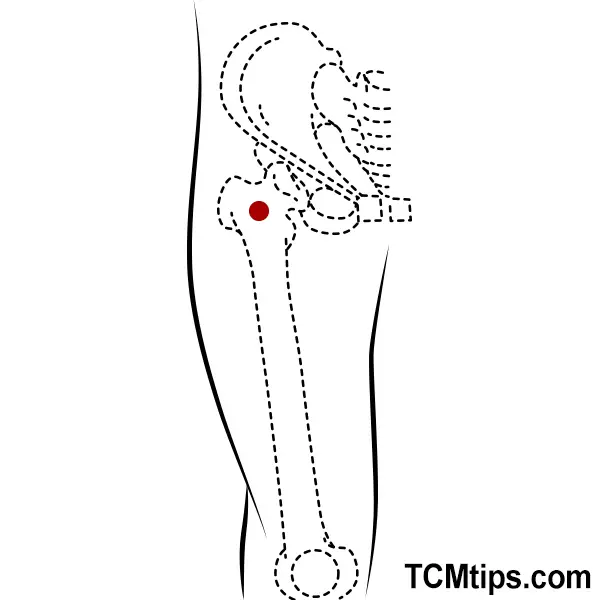
ST-31 is yet another effective acupressure point for hip pain. It is located at the thigh. With the thigh flexed, you’ll find ST-31 in the depression lateral to the sartorius muscle, directly below the anterior superior iliac spine known as ASIS. The function of this pressure point in TCM is to free obstructions in the stomach meridian, chase away damp-wind, and relieve pain. According to Ms. Mai Sogawa, St-31 is effective against the coldness of the lower extremities and paralysis of the lower extremities.
Acupoint: SP-12 (Other Names: Spleen-12/Chong Men/Surging Gate)
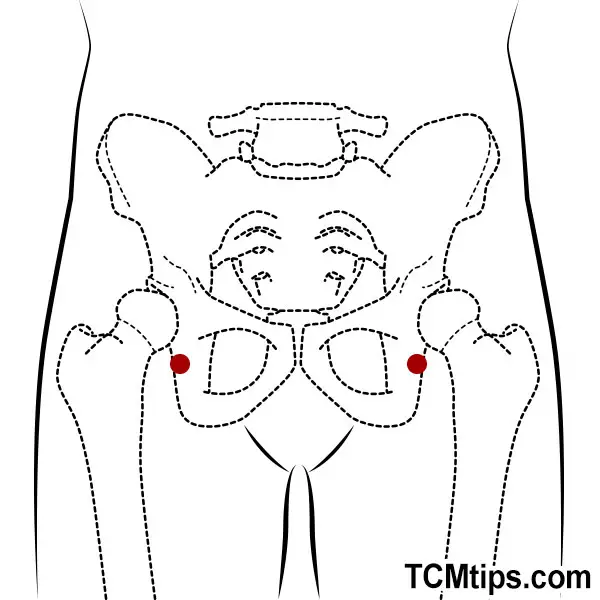
Another remarkable acupoint for hip pain is SP-12. This pressure point is located at the inguinal crease in the groin region, about four finger-width from the midpoint of the upper margin of the pubic hairs. In TCM, it is responsible for moving blood, regulating Qi, and relieving pain. Ms. Mai Sogawa points out that SP-12 is effective for hip joint pain because it contains the psoas muscle, which is involved in the movement of the hip joint.
Conclusion
The hip joint is a very important muscle for walking, so if you can’t walk due to pain, it will lead to muscle weakness. Also, the groin is a very delicate area. Ms. Mai Sogawa suggests that rather than being touched by someone, you should push the pressure points in this article by yourself every day without resistance, so please continue to relieve your pain.
Photo by Andrea Piacquadio from Pexels, Toa Heftiba on Unsplash
 P. Sze
P. Sze 